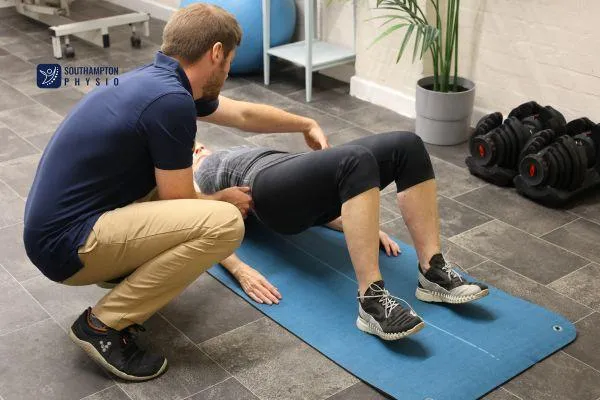
Hamstring Recovery
Pulled Your Hamstring While Running?
3 Common Mistakes (And What To Do Instead)
If you’ve strained your hamstring—during a sprint, hill run, or just an enthusiastic training day—here’s where to start.
Most runners recover well with the right steps. But the same few mistakes can set you back or keep the injury lingering for months.
Stretching It Out Too Soon
The mistake: Thinking tight equals short, so you try to stretch it straight away.
The problem: Early stretching can stress inflamed tissue and delay healing—especially if the strain is near the tendon.
Instead:
• In the first week or two, keep movement gentle.
• Start with isometric exercises (for example, pressing your heel into the floor while lying on your back).
• Progress slowly to active movements like walking lunges and bridges when pain allows.
Why this helps: Controlled movement calms the area and begins to rebuild strength without overloading the healing fibres.
Resting Until It “Feels Better”
The mistake: Waiting for all pain to go before doing any strength work.
The problem: Pain often fades before the muscle is fully healed. Going straight back to running without rebuilding strength and control makes re-injury more likely.
Instead:
• Begin gentle strengthening as soon as it’s comfortable.
• Progress to eccentric exercises over time—these lengthen the muscle under load and prepare it for running.
• Examples include slow Romanian deadlifts, Nordic hamstring curls and slider leg curls.
Why this helps: Strong hamstrings cope better with the forces of running and reduce the chance of another strain.
3. Ignoring the Bigger Picture
The mistake: Only treating the hamstring itself and missing other contributors.
The problem: Weak glutes, overstriding, poor core control, or sudden spikes in mileage often overload hamstrings.
Instead:
• Check your running form: Are you overstriding? Is your glute strength solid?
• Progress training volume gradually—avoid big jumps in distance or pace.
• Include glute strengthening and single-leg exercises.
Why this helps: Hamstrings don’t work in isolation. A stronger, better-coordinated whole body supports your return to running.
Your Next Steps
Recovering fully takes patience and progressive loading, not just rest or quick fixes.
Here’s a simple plan:
• Week 1–2: Gentle movement, isometric exercises.
• Week 3–4: Active mobility and light strengthening.
• Weeks 4+: Build in eccentric strength and gradually increase running.
Every injury is different—if you’re unsure or symptoms persist, consider getting a tailored assessment.
Need Help?
If you’d like professional guidance or a plan that fits your training, we’re here.
